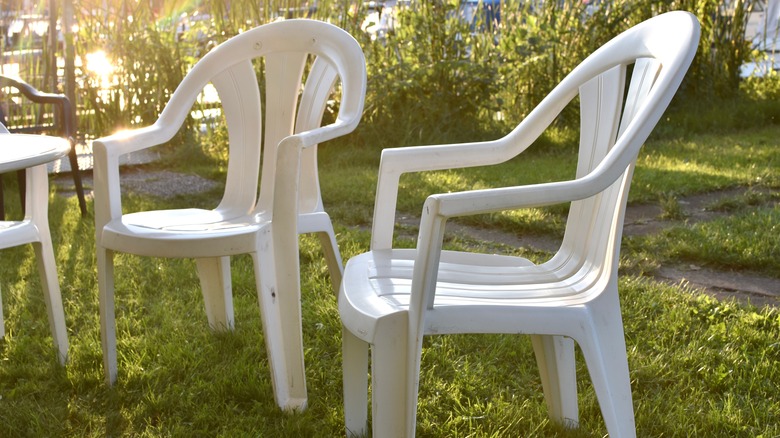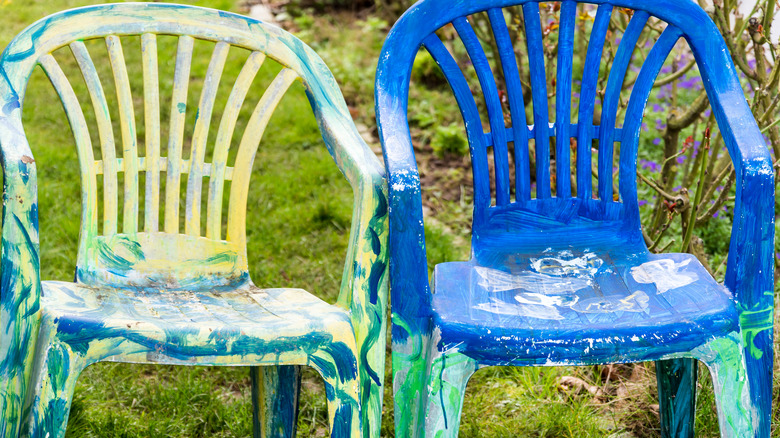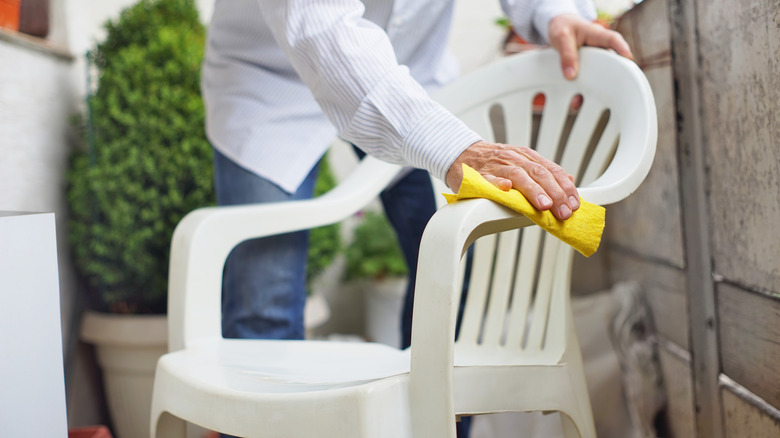Don't Toss Worn-Out Plastic Patio Chairs. Try This DIY To Make Them Look New Again
Close your eyes, then read the following phrase. No, wait, have someone read the following phrase to you: cheap plastic patio chair. The thing you're picturing is the type of chair that organic gardener Robbie of the YouTube channel Robbie and Gary Gardening Easy wants you to revitalize for less than 25 cents. This is the least tricky trick, the least hacky hack, of all the tricky hacks, befitting a couple with an African Grey parrot named Baby Grey and a rabbit named Attacked Rabbit. (Though they also have a dog named Kitty. Can you feel the California yet?) All you're going to do is paint the chair. We're going to tell you all about it, and it's all terribly interesting and even useful, but at the end of the day, you're going to paint some plastic chairs and move on. But before you get started, go ahead and open your eyes.
The first thing you'll see, depending on where you live, might be discarded plastic patio chairs. They were cheap to begin with, and once the UV radiation begins to deteriorate their surface, they're often discarded in spite of being unbroken and fully functional. We'll call this the Disposable Culture half of California. Robbie and partner Gary firmly inhabit the other half of California. Call it, perhaps, the Reusable Culture. Anyway, we're going to give the chair a coat of paint or, if you're feeling adventurous, you could try this nifty WD-40 hack for restoring faded plastic furniture.
A primer on painting plastic
We've been misled to believe, perhaps by cans of paint declaring their compatibility with plastic, that you need to paint plastic with compatible paint. With apologies to George Gershwin, who might owe a few apologies of his own, it ain't necessarily so. Most paint works well enough on plastic, though particular formulations might improve on adherence. What Robbie uses is whatever paint samples have been returned to big-box hardware centers, and are then put on sale for as little as 50 cents. Robbie buys whatever paint is available at this price, regardless of type, color, or sheen. She says you can paint two or three chairs with one tester can of paint. That's quite a bargain.
Applying the paint itself is where you're likely to have the most problems, but they're nothing insurmountable. The best paint to use, unless you stick to Robbie's paint-tester strategy, is spray paint. Apply it in thin, even coats to ensure you don't have runs or pooling, and allow the paint to dry after applying each coat. If you're used to painting thirsty surfaces like wood, this might take a little getting used to, but you'll master it in no time. But hang on before you get started ... we have some tips for prepping your chair's surface to ensure the best coat of paint possible.
Painting primer on plastic, and other tips
We have a few ideas on how to make Robbie's paint job last a bit longer. The idea is to make the paint stick as well as possible, and that's accomplished in a few simple steps. Start by cleaning the chair surface with whatever cleaner you prefer that won't leave a residue after being rinsed. If you've been as obsessed as we have with cleaning using orange oil and orange peel, this is probably not the right application for that hack because of the trace residue it leaves behind. After a clean and rinse, rough up the chair's surface a bit with some fine-grit sandpaper to give the paint more to ahdere to (the scratches are too fine to be visible under the new paint). Wipe off the sanding dust with a damp rag and allow the surface to dry completely.
Most paint you buy these days has primer in it, but it can't hurt to first apply a primer made specifically for use on plastic. The primer can or product data sheet should specify an evaporation time you should take note of after applying the primer and before beginning to paint. Also, we tried using dryer sheets to make painting plastic easier, and had reason to believe it's somewhat effective. But as far as Robbie is concerned, none of this is strictly necessary if you're not terribly concerned with the quality of finish you get on your chair.


